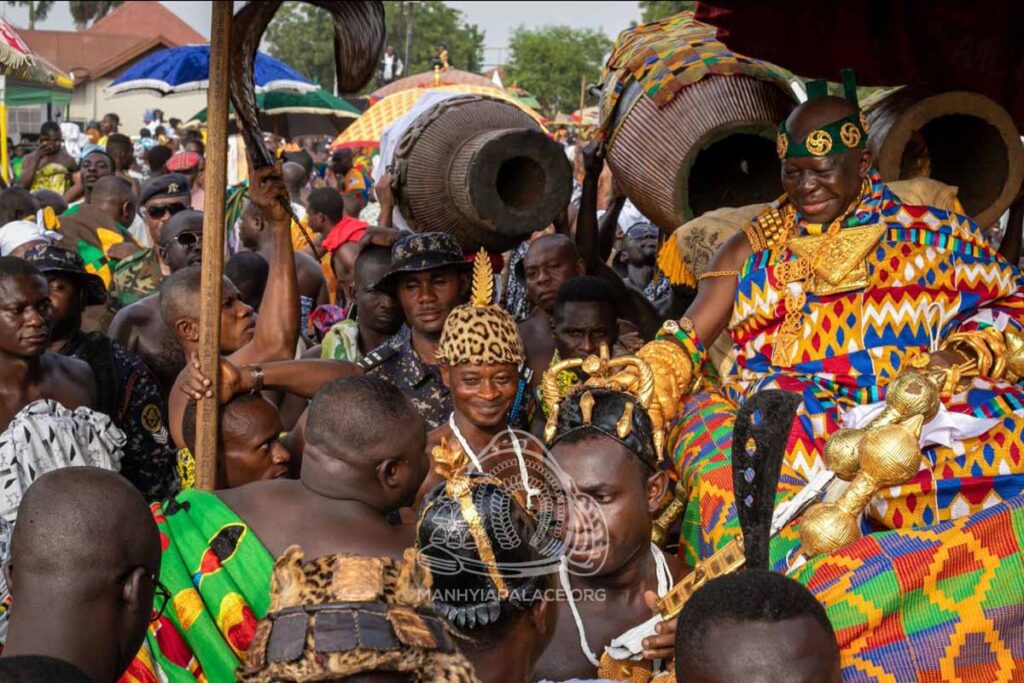
Photo Credit: Manhyia Palace / Akwasidae Procession of the Ashanti King – Feb. 2023 / Click all photos to enlarge
The Akwasidae Festival is one of West Africa’s most fascinating cultural events. Held on the grounds of the Royal Palace in Kumasi, Ghana, this traditional ceremony of the Ashanti Kingdom has been celebrated for centuries. It’s a spectacular visual feast chocked full of African-style pomp & circumstance!
The Ashanti (also called Asante) is one of the last great African kingdoms. In line with its Akan calendar, Akwasidae is celebrated every 6 weeks on a Sunday. The festival draws thousands of people – citizens & dignitaries of the Ashanti Kingdom along with international visitors.
Happily, that included me in early 2023! I was visiting West Africa on a 2-week cultural tour with friends. Dates were planned so we could attend the February 5th Akwasidae – the first of the year. The festival promised to be the highlight of our trip – and boy, was it ever! Truly an incredible experience I’ll always remember.
- Click on all photos to enlarge
- Click photo to enlarge / Woman in colorful Kente cloth
That’s because the gold-rich Ashanti Kingdom has both a proud heritage and a rich, vibrant culture. In addition to the elaborate rituals and powerful sounds of African drums, there was a constant parade of local people dressed in the most beautiful & brightly colored clothing – both traditional Kente fabrics and modern Ghanian fashion.
Did I Mention Gold?
The Ashanti King and Queen Mother, plus all the kingdom’s chiefs and many of the guests were absolutely “dripping” in gold, wearing massive pieces of gold jewelry (photo to right).
In fact, gold is what brought celebrated (and incredibly handsome!) actor Idris Elba to this festival as a special guest. He was filming a documentary on gold – more on that later!
In this blog post, I will bring the amazing Akwasidae Festival experience to you, through words, photos and videos – so you can vicariously enjoy this fascinating slice of West African tradition. Perhaps, you’ll be inspired to plan your own trip to Ghana to attend the festival one day!
The Akwasidae Festival
The Akwasidae Festival is a time for the Ashanti community to come together to celebrate their cultural heritage and give thanks to their ancestors. In addition, they pay homage to their beloved King, Otumfuo Osei Tutu II, and Queen Mother Nana Konadu Yiadom III.
On festival day, the Asantehene (Asante King) meets his sub-chiefs, subjects, and dignitaries in the courtyard of the Manhyia Royal Palace. These attendees include paramount chiefs representing all regions of the Ashanti Kingdom, divisional chiefs, other royals, government appointees, and citizens from across Ghana.
Quick Intro to the Ashanti Kingdom
In 1701, the Ashanti state was founded by Osei Tutu, who conquered and unified 30 smaller states into the Ashanti Kingdom. He was installed as Asantehene, or king, and established Kumasi as the capital city.
The king’s authority was symbolized by the “Golden Stool” of Asante, on which all Asante kings are enthroned. In the 18th & 19th centuries, the Ashanti Empire occupied what is now southern Ghana.
- Africa Map Credit: CardioStart Mission
- Ghana Map Credit: Easy Track Ghana
Today, the Ashanti / Asante Kingdom exists as a constitutionally protected, sub-national traditional state in union with the Republic of Ghana (which gained its independence from the British in 1957). Kumasi (see map) remains the location of the Royal Palace and seat of power of the Kingdom. The Ashanti people are part of Ghana’s largest ethnic group, the Akan.
Just as in the past, the Ashanti economy is derived mainly from gold and agricultural products. At the height of the Ashanti Empire, its people became wealthy through the trading of gold mined from their own territory. In fact, Ashanti gold jewelry is considered masterpieces of African art – and there was plenty evidence of that at Akwasidae!
The Famed Golden Stool
Akwasidae also serves as a celebration of the Golden Stool. This sacred stool is a revered symbol of the Ashanti people, representing their strength & unity. The original Golden Stool is said to have “floated down from the heavens” in the 17th century. It is believed to contain Sunsum – the spirit or soul of the Ashanti people.
- Credit for both photos: Steemit blog post
Drawing upon the Akan tradition of a stool indicating clan leadership, the Golden Stool became the symbol of the united Ashanti people and legitimized the rule of each of its possessors, the Asante Kings.
Apparently, the Golden Stool is kept in a “secret location” in the Royal Palace. When it’s brought out – only for very special occasions! – it is placed on its own throne, sitting to the king’s left. Entirely made of gold, the stool stands 18 inches high, 24 inches long, and 12 inches wide. And no, we did NOT see the golden stool at this festival.
About the Ashanti King & Queen Mother
The King
Otumfuo Osei Tutu II is the 16th Asantehene (King of Asante). In fact, he is a direct descendant of the founder of the Asante Kingdom, Osei Tutu I (1660–1717). Born in 1950, his Majesty is currently aged 74. In 1999, Osei Tutu II “ascended the Golden Stool” and became Asantehene, succeeding the throne from his late brother.
The Queen / Queen Mother
Nana Konadu Yiadom III is the 14th Queen Mother (Asantehemaa) of the Asante Kingdom. She is the eldest sister of the current King. She succeeded her mother who died in 2016, at the remarkable age of 111 (that is NOT a typo!). Yiadom became Asantehemaa in 2017 at age 83. That means she’s currently around 90 years old.
Our Arrival at Akwasidae
My TransAfrica tour group spent Saturday night in Kumasi to be ready for Sunday’s festival. Earlier that morning, we toured the small but interesting Royal Palace Museum and visited Kumasi’s bustling street market.
We returned to the Manhyia Palace festival grounds at 11am. Luckily, we had reserved seats under one of the large tents along the periphery. This was quite helpful in providing a place to take occasional breaks from the hot equatorial sun.
It was still early. Guests were just starting to arrive, so it wasn’t too crowded – yet! In another couple hours, this whole area would be packed to the gills! My friend Nadia & I got our cameras and headed out to explore all the many happenings.
- Main durbar stage
- Manhyia Palace entrance
In a central area, we saw a white circular concrete platform stage with a red carpet leading up to it. (above left) Quite a few hours from now, the King will be seated here for a durbar (formal reception) in which he would be greeted by his chiefs and other dignitaries. Some of the Akan wooden stools were already positioned on the stage.
- Janet & Nadia with Ebenezer outside the on-site radio & TV station where he works
- Film crew for the Idris Elba gold documentary
Media of all types (radio, TV, film crews) were everywhere, which only added to the buzz of excitement. Nadia & I met a nice man named Ebenezer who worked with the local radio and TV station in Kumasi. In fact, they had a studio right there on site. And we almost got to take a tour – not realizing until later that Idris Elba was inside doing a radio interview! Darn – we were so close!
Festival goers were constantly arriving, dressed in their finest clothing. Many were adorned with beautiful – and large! – pieces of gold jewelry. In general, the local people were so gracious and kindly let us take their photos. I wanted to capture their beauty & elegance!
Arrival of Ashanti Chiefs & Their Delegations
For me, a particularly entertaining & fascinating part of Akwasidae was the arrival and procession of the various delegations. They represented the approximately 16 different tribes of the Ashanti region. Each delegation would parade in together, carrying large, colored umbrellas (usually red) to shade the chiefs and others in their group.
- Credit: Manhyia Palace website
Some large delegations made a raucous entry with lots of drumming and chanting, while others were smaller in size and quieter. Some chiefs walked solemnly, while others entertained the crowd by doing some dancing along the way. I noticed some of the chiefs had “handlers” who walked close to them and helped guide their movements. (photo below left & video further below). The chiefs usually carried a white horsetail whisk. (below right)
After their grand entrances, the delegations would take up residence in one of the areas around the perimeter of the grounds, sitting together in chairs under umbrellas (to also block them from the hot sun!). Often, there was some type of special throne-like chair for the chief. (below left)
- This photo shows the throne chair that the delegation had arrived early to set up. Photo on right shows the chief sitting regally on his throne with his attendants.
- Click all photos to enlarge
These arrivals, which spanned several hours, continued to fill up the festival grounds. One article I read (and agree with!) likened this Parade of Chiefs entering the venue to the Parade of Countries at the Opening Games of the Olympics – each exhibiting their own unique style!
Nadia & I found that even the Ashanti chiefs kindly allowed us to take their photos. And, in this case (below), they even enjoyed seeing the final results. As you’ll see by the different photos in this blog post, you can generally identify a “chief” by the colored headband he wore with different gold ornamentation on it. (like the two men below).
When the chiefs were finally seated with their delegations, members from other groups would come to pay their respects.
- Credit: Manhyia Palace website
Next, I will share some more colorful & exuberant arrivals complete with lots of wonderful African drumming. Below you’ll see typical clothing worn by attendants carrying swords covered with gold ornamentation. The men wore their cloth (typical Ghanian prints) wrapped at the chest. These men (below) had interesting black caps with more gold to complete the ensemble!
Other Interesting Festival Sights
Below is a video of a woman in typical Ashanti dress with her young daughter dancing for the crowd. Although I would venture to say she was mostly dancing for us tourists. When she saw my cameras focused on her, she danced up to me and assertively said “Give Me Money!” So yes, I did give her a tip. And happily, I got the following video to share with you.
There were also some “intimidating” characters we saw – clearly part of the tradition from the days when the Ashanti Kingdom was known for its fierce warriors. We spotted the man seen below with three big knives sticking out of his wrap at chest level, as well as carrying one long knife. Nadia was brave enough to approach him and, of course, he was quite friendly!
Speaking of more militaristic rituals. It was at a point in the early afternoon when most of the delegations had arrived, but before the king made his appearance. Suddenly, thundering, ear-piercing gun shots began to ring out. I looked around to see a small group of similarly-clad men and women with old-style muskets filled with gunpowder – and they were firing shots into the air.
I will admit the gunshots were loud and truly hurt my ears. I ended up protecting my ears with my fingers, looking like a true tourist! Even with this, my ears were ringing with increased muffled sounds until the next day. So, warning – you might want to take some ear plugs with you for this part. Luckily, it didn’t last too long!
- The Musket Brigade has arrived – hold your ears!
- Another regal chief with his court / Check out his attire
- I love this man – check out his interesting weaponry!
Arrival of the King – The Procession
At this point, with the festival grounds jam-packed with people and most of the delegations seeming to have arrived, I took a much needed 15-minute break back at the tent to refresh and hydrate from the intense heat.
When I emerged (at around 1:40pm), I saw people all looking in a particular direction. As I edged closer, I caught a quick glimpse of the king’s head as he passed by, being carried on a palanquin! OMG, I had just about missed the big moment! You can check out the great photo that I captured (below right) – NOT!
- A view of the crowds as I worked my way forward to see what was happening
- My “award-winning” shot of the side of the King’s head
- Credit: World Gold Council
- Credit: Manhyia Palace website / Click photo to enlarge / A great photo showing the King being carried on his palanquin wearing Kente cloth & adorned in gold
Luckily, Nadia had already been there – with a decent vantage point amidst the intense crowds – so she was able to film the following video of the king’s procession. With gratitude, I could see what I had missed – and be able to share it with you. [Video is 2 minutes long] [Video Credit: Nadia Salameh]
Procession of the Queen Mother
Very soon after the King had passed, I was able to catch a glimpse of the Queen Mother as she came by with her procession at around 2:10pm. The Queen of the Asante Kingdom, Nana Konadu Yiadom, was also being carried on a palanquin. She soon made a second pass so I was more prepared and able to get a better photo this time! The Queen was surrounded by her court in the procession.
- Credit: Manhyia Palace website
So What Came Next?
Soon after the Queen’s procession, our tour guide Noah told us that we would be leaving shortly (around 2:30pm) to continue the long drive north to our next stop. Even though there was more to see at Akwasidae, we had been here for 3 1/2 action-packed hours in the crowds & heat. So, we were ready to climb aboard our air-conditioned bus and relax. We had seen so much and gotten some great photos, especially when it was less crowded at the beginning of the festival.
What happened after we left? This is what I learned from further research plus some additional photos of the experience.
More About the King & Akwasidae
The official Akwasidae ceremony begins inside the Royal Palace from the Asantehene’s throne room – where only “initiates” are allowed. Then, as you’ve seen, the king goes out in a procession with his entourage seated in an ornate palanquin amidst drumming and the firing of muskets. He was dressed in kente cloth with gold ornaments around his wrists and arms.
Apparently, the ceremony/procession can also include attendants bringing gifts, story tellers reciting the deeds of past Kings, drummers and ivory trumpet players, sword bearers, armed guards, carriers of ostrich feather fans, and high fetish priests. Impressive!
- Bogyawe / Photo Credit: Onua online
- Idris Elba meeting the King / Credit: Instagram
Durbar of Chiefs and Royals: The King then returns to the durbar stage (known as the Bogyawe) where he (and the Queen) sit under large colorful umbrellas, surrounded by chiefs, royals and elders. After the Asantehene sits, all other sub-chiefs go and pay homage to him, including any special dignitaries in attendance. That certainly included Idris Elba who was the honored guest that day (above right).
[Durbar means a formal reception held by an African ruler].Interesting Fact: In November 2018, Prince Charles & Camilla were honored guests at a special Akwasidae here in Kumasi.
Idris Elba & The Gold Documentary
Okay, as promised, back to Idris Elba – the uber-talented British actor & Hollywood TV & movie star. Turns out, Elba has African roots with his mother originally from Ghana and father from Sierra Leone!
We learned that Idris was in Kumasi that day filming the Akwasidae Festival for a special documentary about gold. Thus, he was an invited guest of the King & his film crew was granted special media access.
Sadly, I never got to actually see him, but we did hear his voice over the loud speaker as he was being interviewed (from the on-site Ashanti radio station) during the festival. More about the documentary entitled “Gold: A Journey with Idris Elba” below.
Kente Cloth
Kente cloth is the traditional garment worn by Ashanti royalty. However, it’s been widely adopted throughout the Ashanti Kingdom and is worn for important events and festive occasions like Akwasidae.
The color and design of the Kente cloth worn are still important indicators of status and clan allegiance. Its intricate geometric patterns are full of symbolic meaning while its orange-yellow hues indicate wealth.
Kente is woven on treadle looms – until recently by only men! – in long thin strips that are sewn together. The brightly colored cloth can be single, double or triple-weaved. As Ghana’s signature cloth, Kente is still some of the most expensive material in Africa.
Feather Headdress / Ashanti Royal Sword Bearer
I happened to get a photo of this man with an amazing headdress walking in the crowd after the king’s procession. Only later did I learn and fully appreciate who and how important he was! As the Ashanti Royal Sword Bearer, he wears an eagle-feathered headdress featuring golden ram horns.
His role is to protect the King at all ceremonies, by warding off evil and absorbing any physical threats to his master. His ritual regalia is believed to protect not only the souls of the royal court but the entire Ashanti nation.
Horsetail Whisk (Bodua)
Akan fly whisks are ceremonial objects used by Ghana’s Akan people. They are an important symbol of authority and power – and are often carried by chiefs, elders, and other important individuals during formal occasions and ceremonies.
I saw the King and chiefs each holding a white whisk at the Festival. (see photo in hands of chief on the right).
These fly whisks are typically made from the tail hairs of animals such as horses or elephants. They are bound together and attached to a handle made from wood, textiles, and gold foil.
Although the fly whisk is used as a practical tool for swatting away insects, the purpose is more for protecting the individual from evil spirits and unseen forces meant to do harm.
More About the Golden Stool
Since the 17th century, the Golden Stool has been the symbol of power in the Ashanti Kingdom. According to oral tradition, Okomfo Anokye, a High Priest and one of the two founders of the Ashanti Confederacy, conjured the Golden Stool, which was decorated with golden bells. He caused it to descend from the sky where it landed in the lap of Osei Tutu I, the first Asantehene (King) of Ashanti.
The Golden Stool is considered so sacred that it is never allowed to touch the ground or be used as a seat. In fact, every new king is lowered and raised over the Golden Stool without ever touching it. No one could be considered a legitimate Asante ruler without the Golden Stool.
More About the King – A Very Interesting Man!
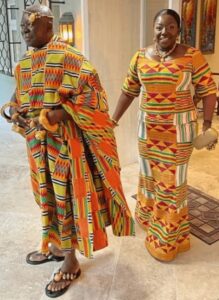
Credit: 3news.com-Ghana / King & Lady Julia in London for King Charles III Coronation at Westminster Abbey – May 2023
As mentioned, Otumfuo Osei Tutu II is the 16th Asantehene. He became King of Asante on April 26th, 1999 (at age 48). He is the youngest of 5 children. He and his wife, Lady Julia, have 6 children. She was working as an attorney when they met.
The King is a well-educated professional, who studied accountancy in Accra, Ghana and earned a degree in Human Resources Management and Public Administration from London Metropolitan University. He worked in Toronto, Canada and London before returning to Ghana in 1989 to start a transport business.
Otumfuo is credited with transforming traditional rule over the years, bridging the gap between traditional leadership and modern leadership styles. His platform as King of Asante focuses on furthering peace among the region and developing the education, economy, and health of His people.
Documentary Films About Gold & the Ashanti Kingdom

Film – 67 minutes / Released Oct. 2023 / Segments filmed on location include Ghana, South Africa, Canada, India, DRC, and UK (London).
Another Documentary Film on Ashanti Kingdom
If you’d still like to know more, here’s another documentary I found interesting. From the BBC series entitled the “Lost Kingdoms of Africa,” this one is specifically focused on the “Kingdom of Asante.” First aired in January 2012, it’s hosted by Dr. Gus Casely-Hayford and runs 58 minutes. Click here to view video.
More About the Current Ashanti Kingdom
Manhyia Palace is the seat of the Asantehene, the Monarch of the Ashanti Kingdom, as well as his official residence. The King receives thousands of visitors around the world each year through private appointments and traditional events.
Millions of tourists also visit the Manhyia Palace Museum which served as the private residence of past Kings until it was rehabilitated into a museum in 1995.
Website of Manhyia Palace – has lots of good information & a photo gallery
COMMENTS: Have you experienced the Akwasidae? Does this look like something you’d want to add to your travel dream list? Anything you found particularly surprising?



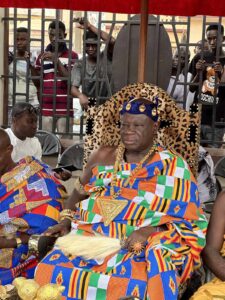
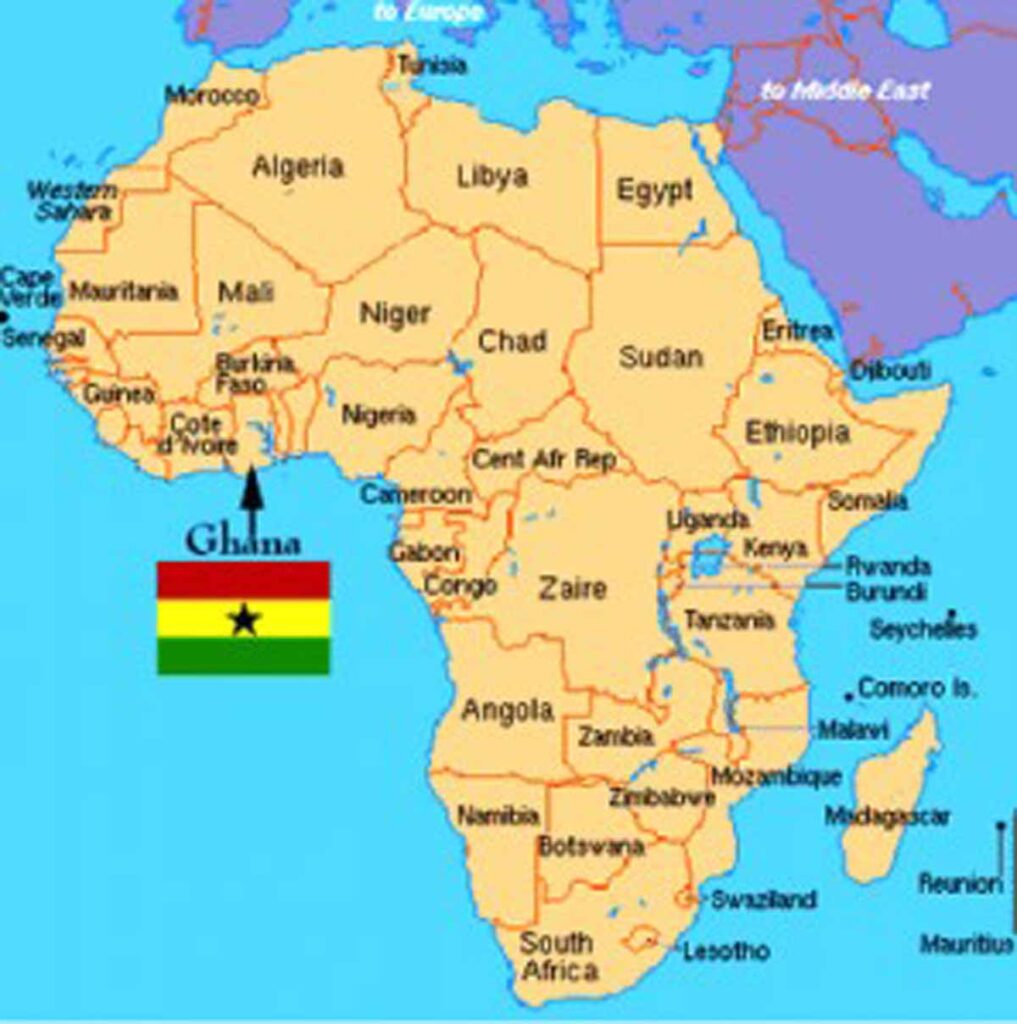
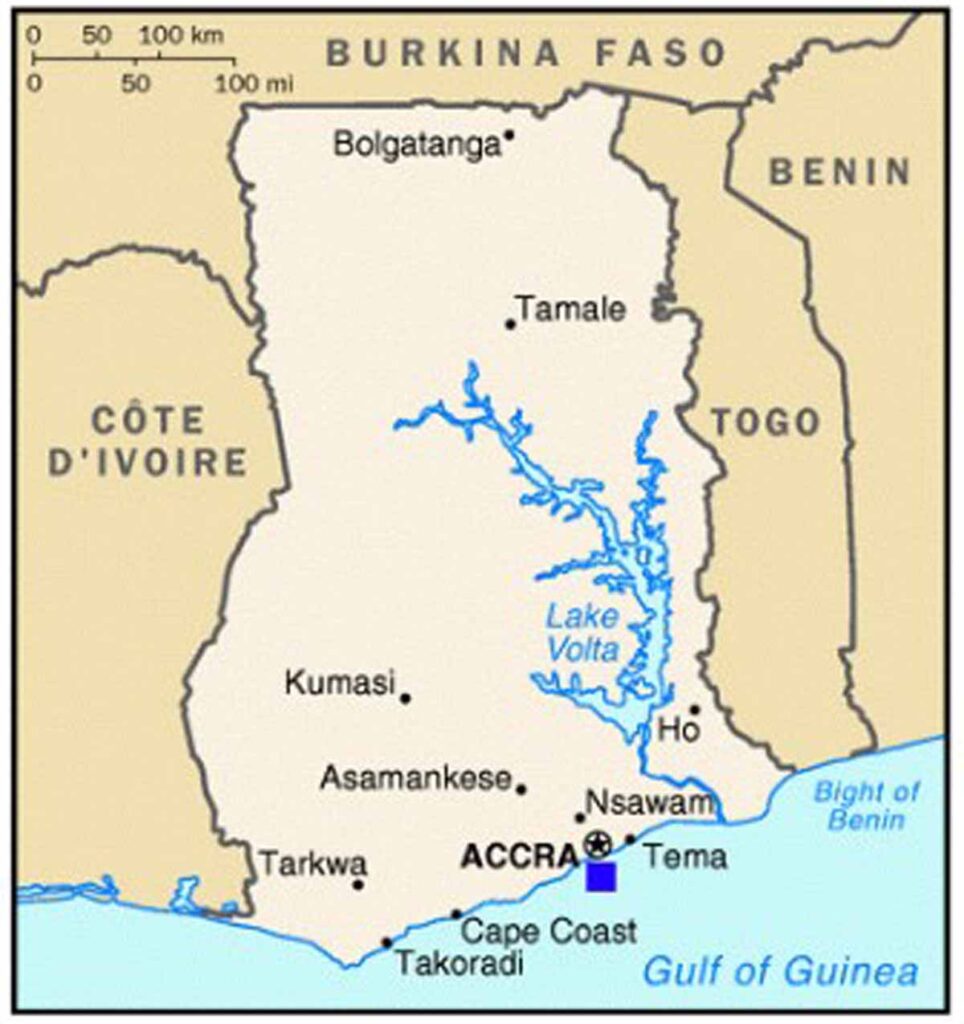


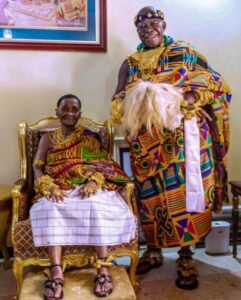
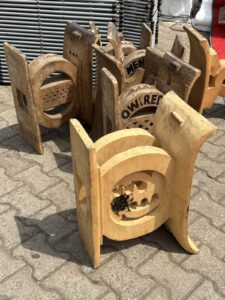
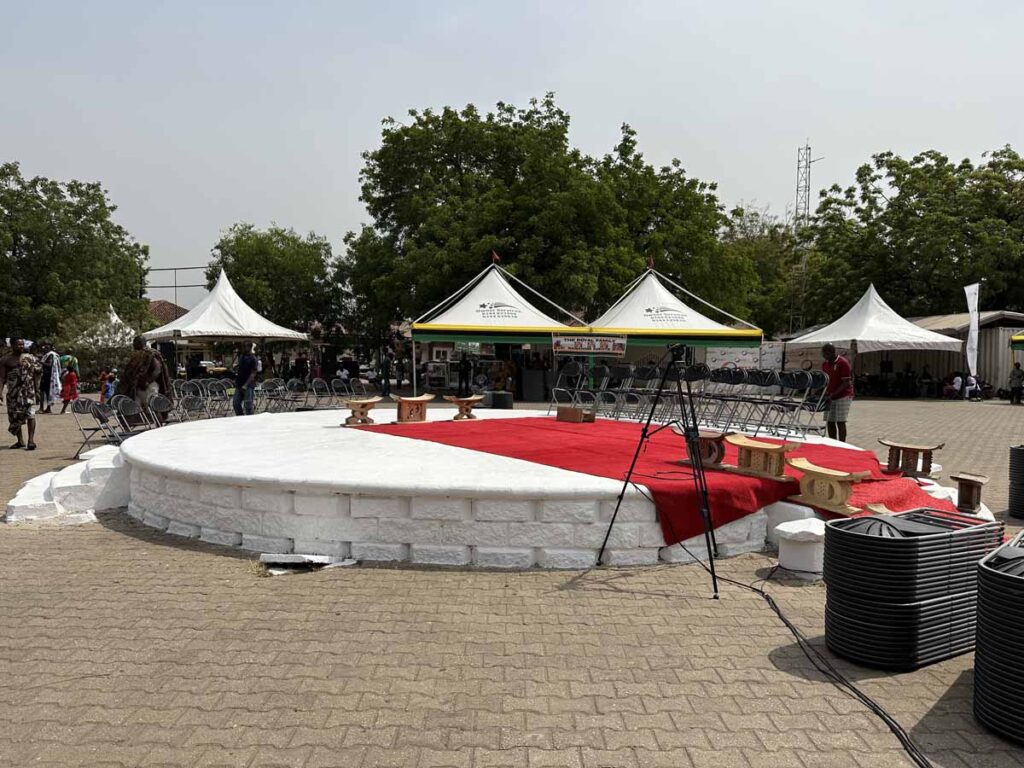
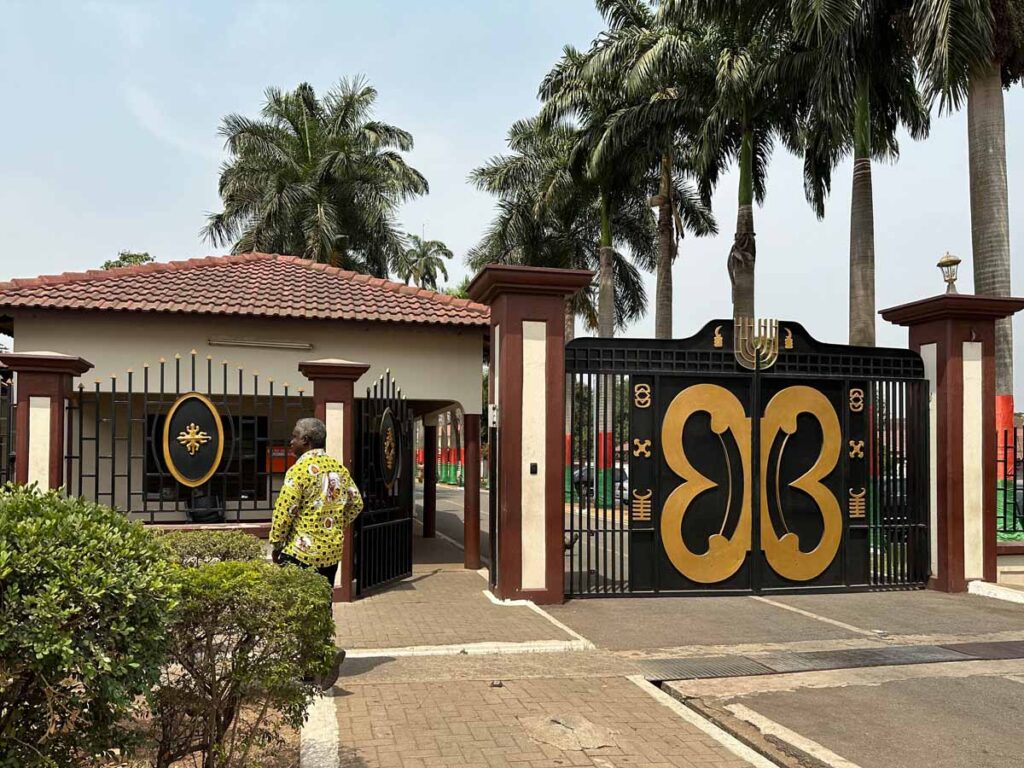
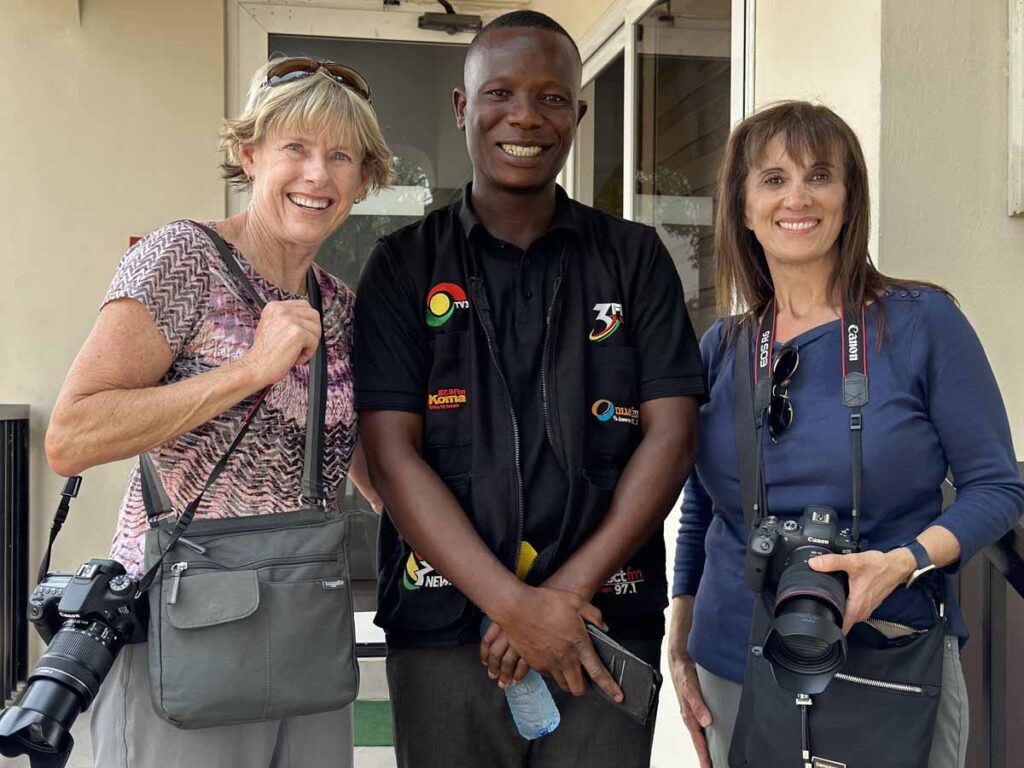
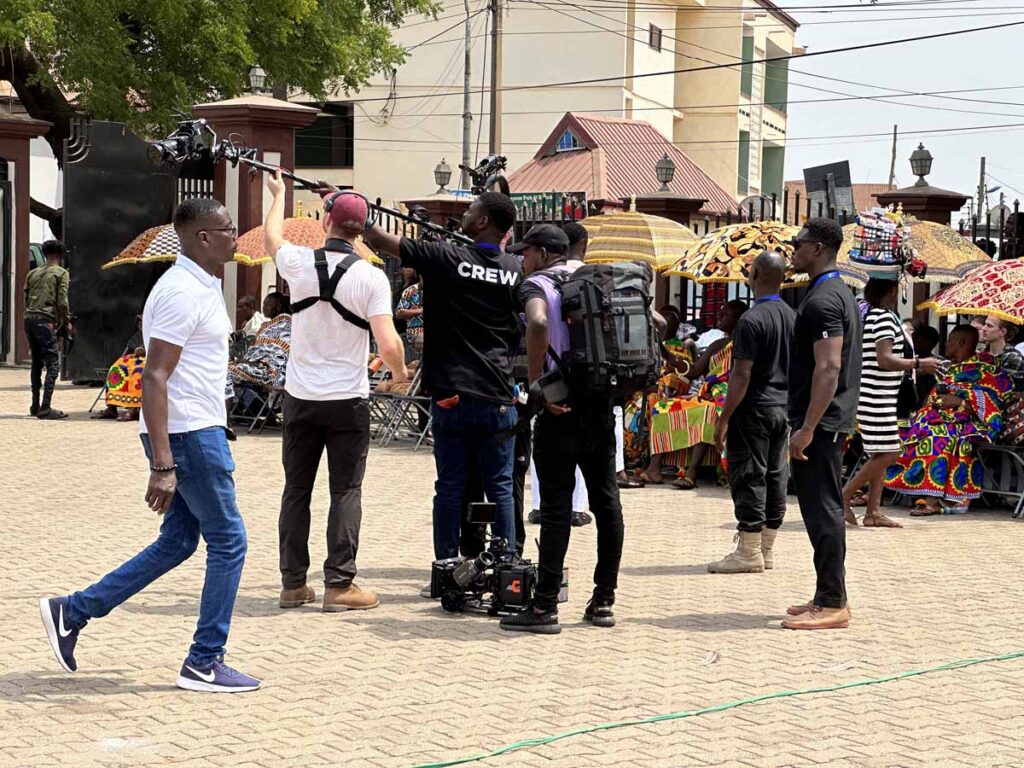
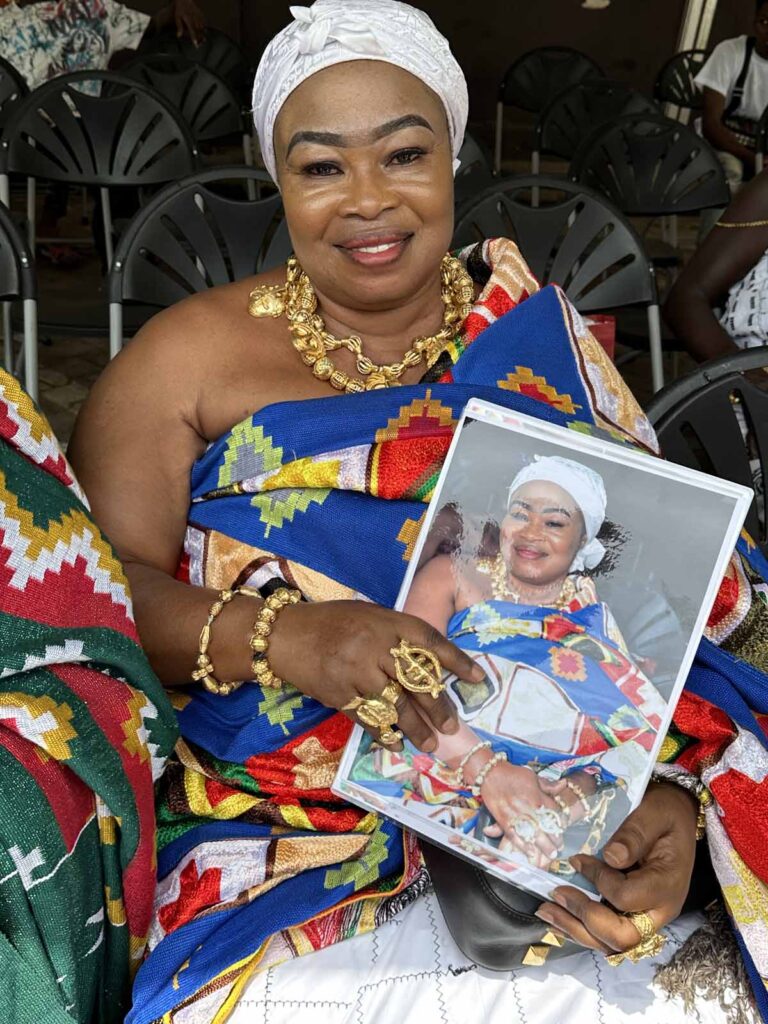
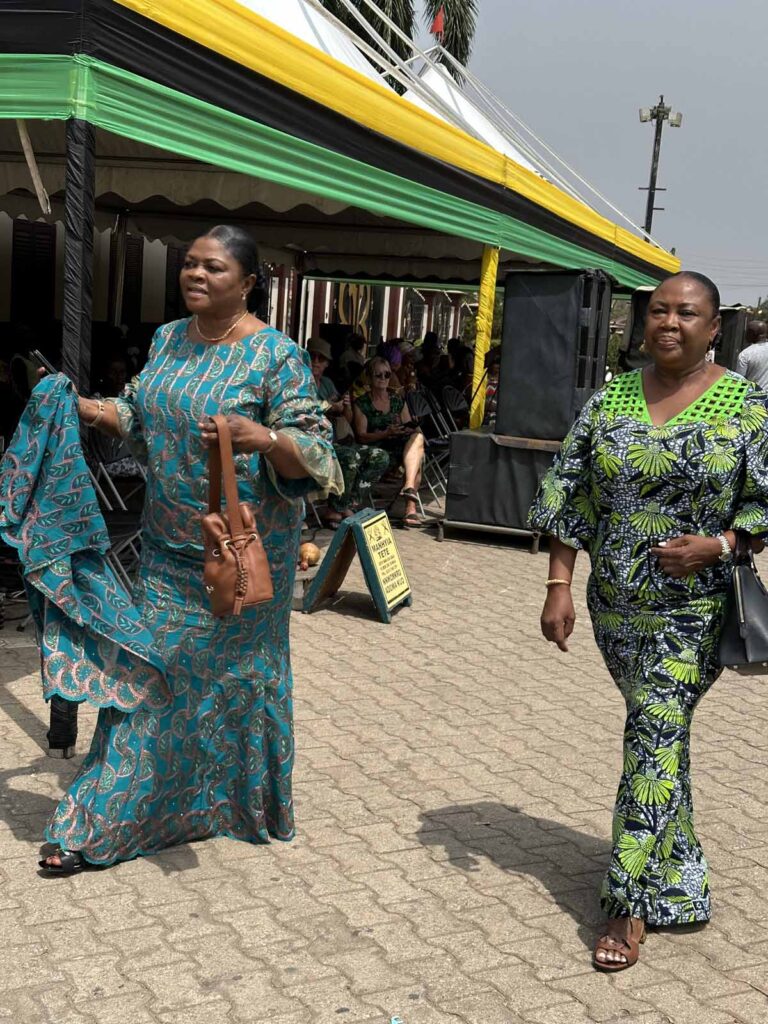
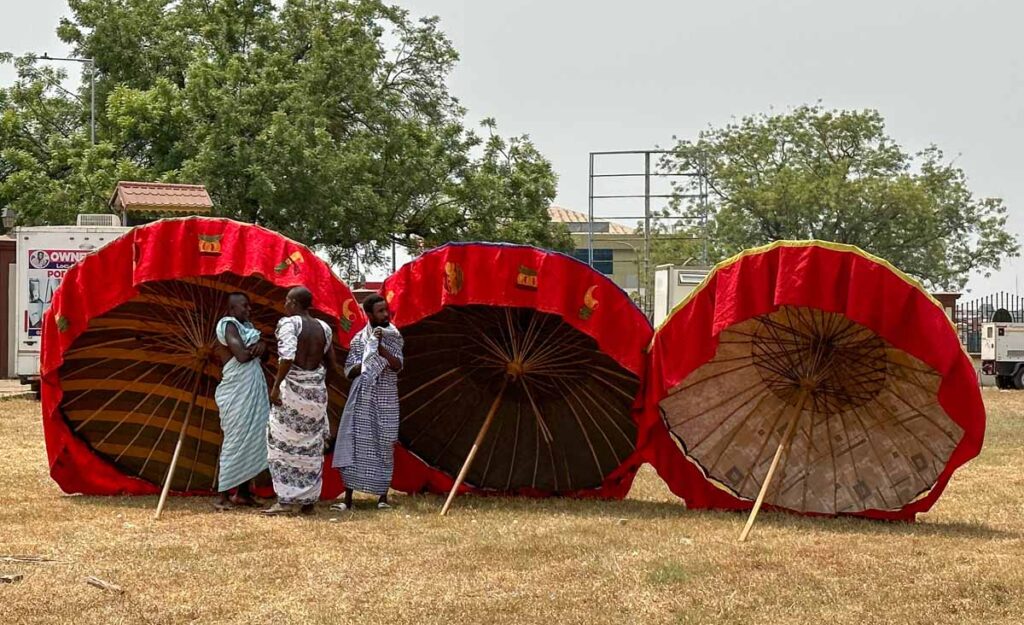

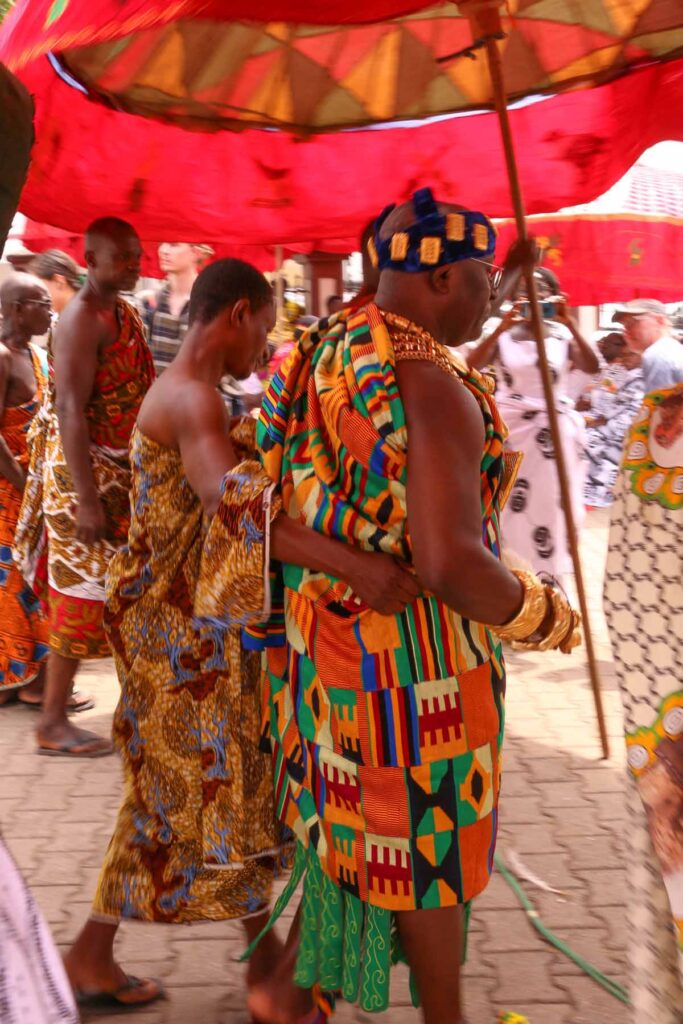
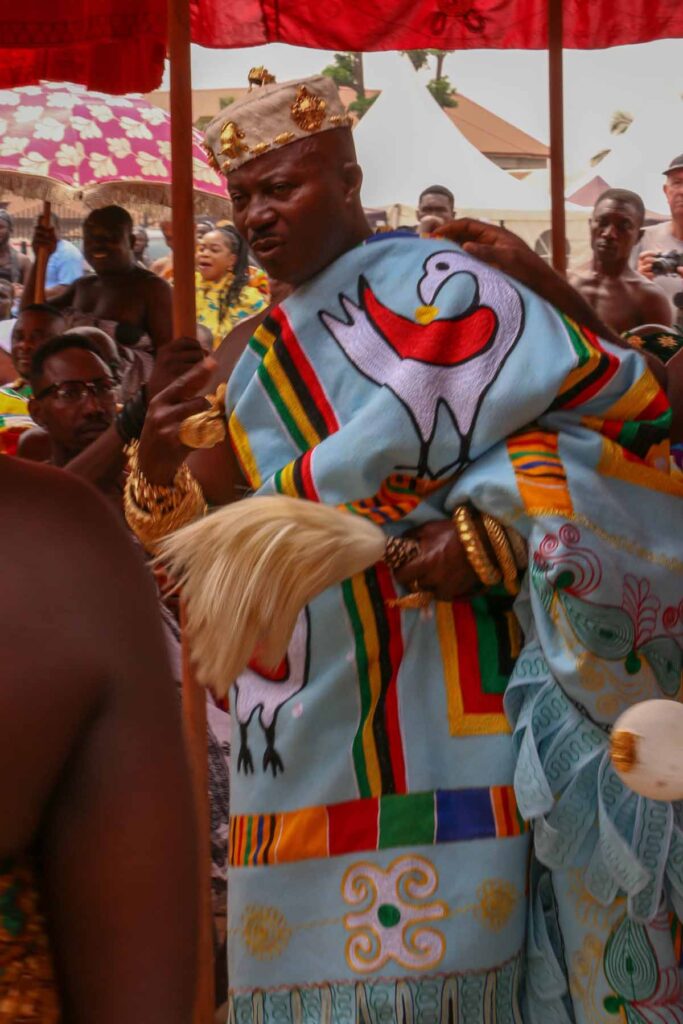
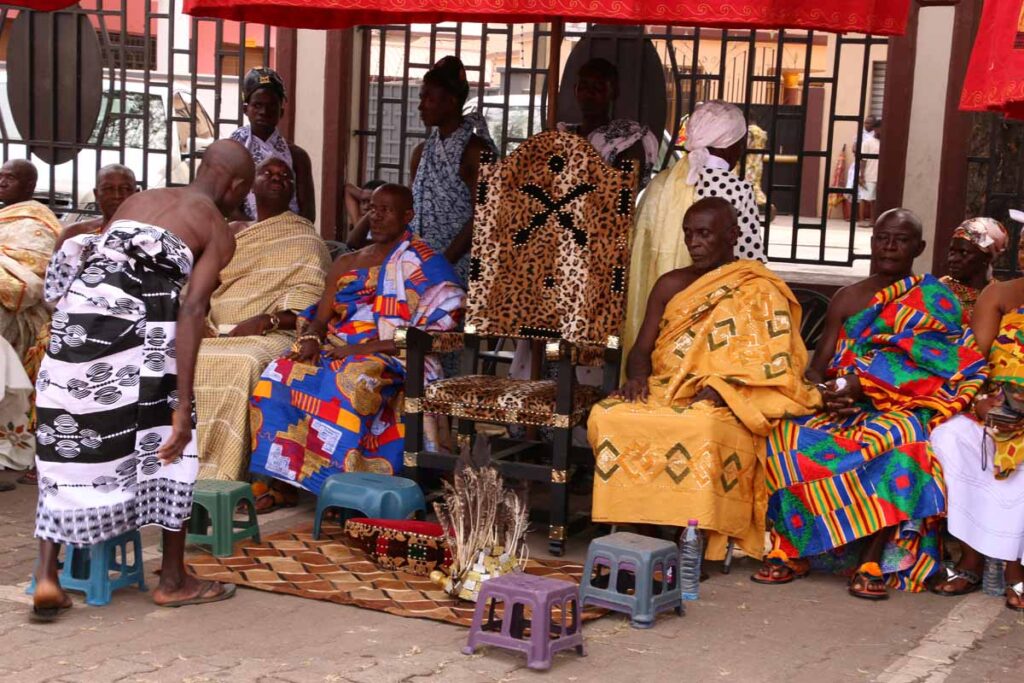
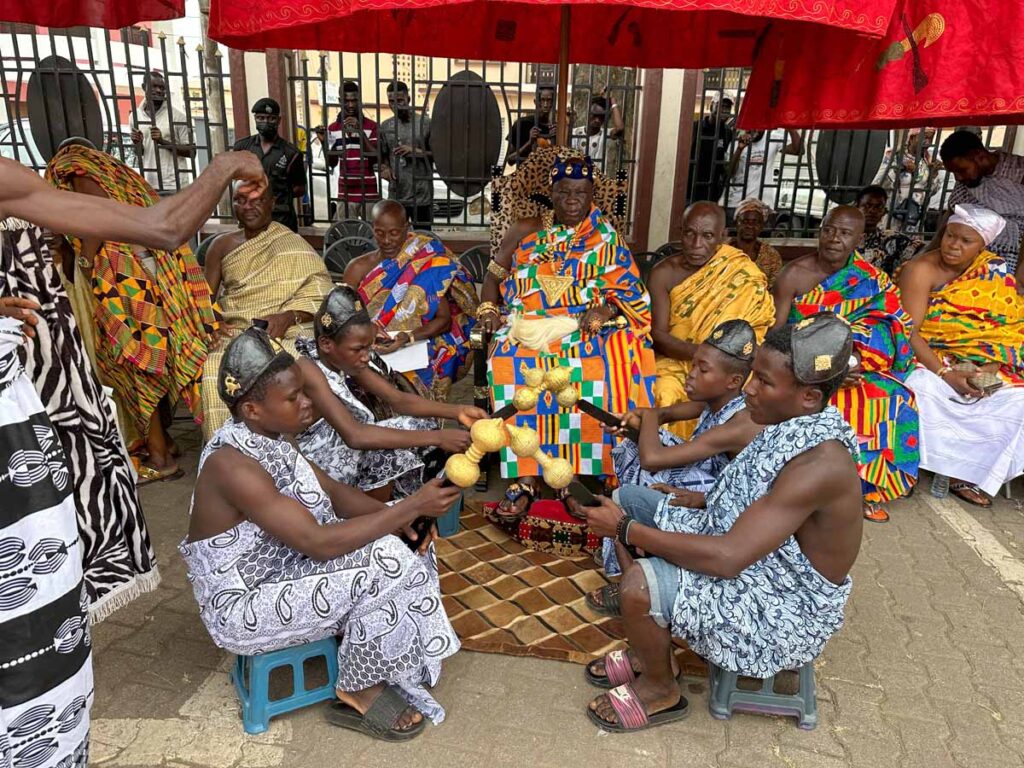
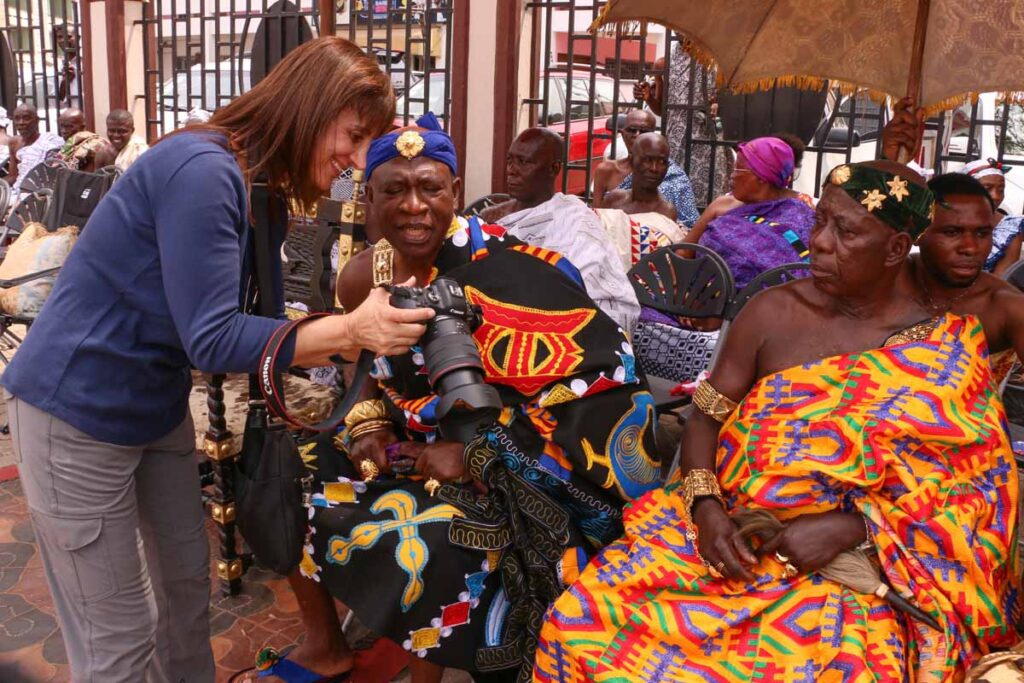

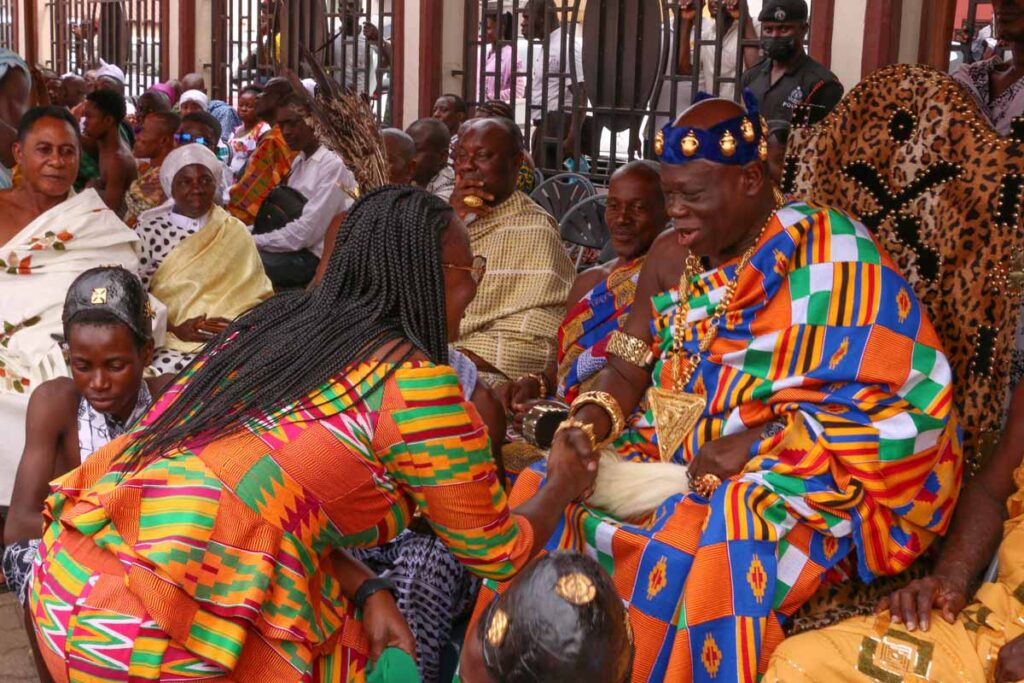



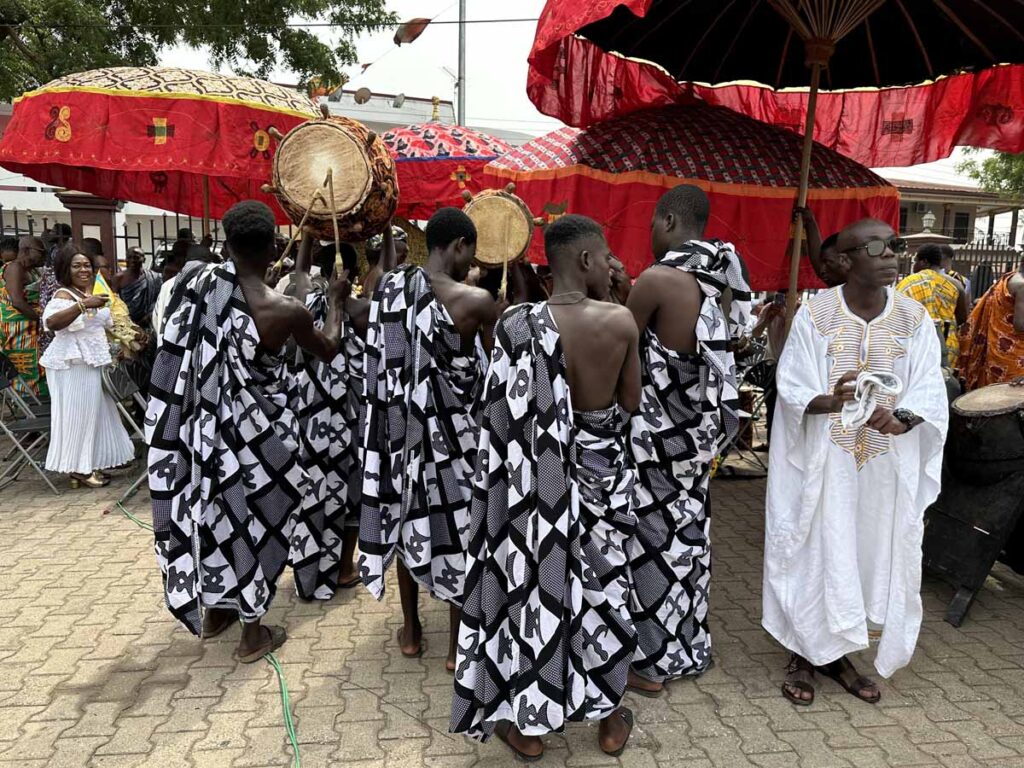
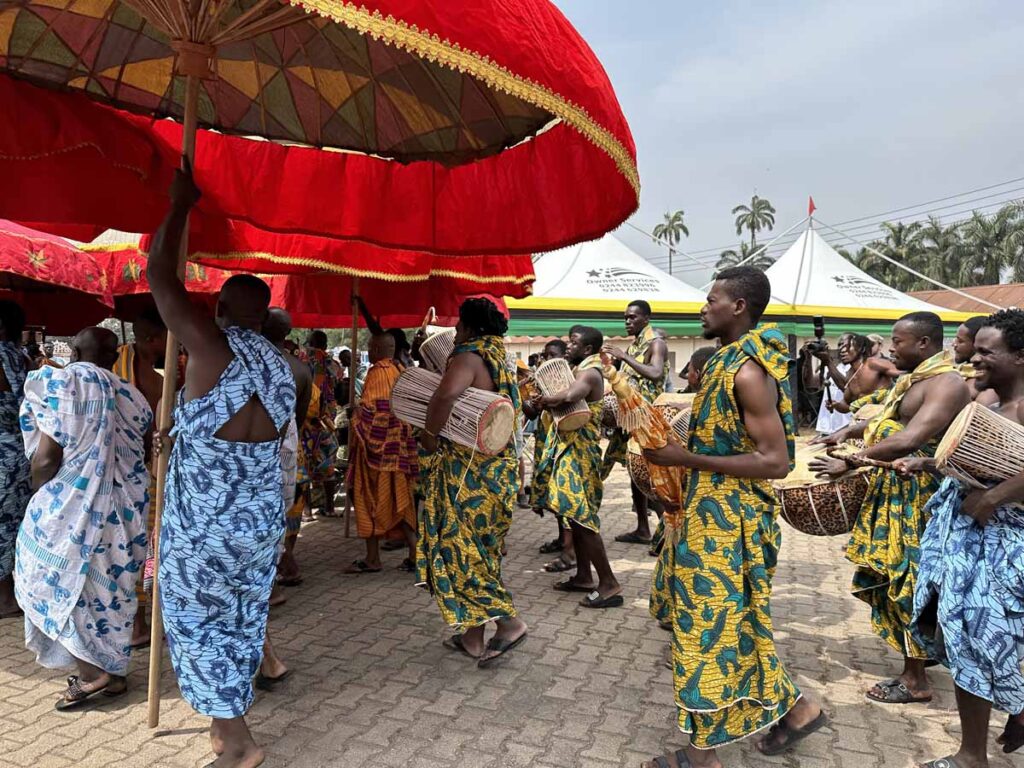
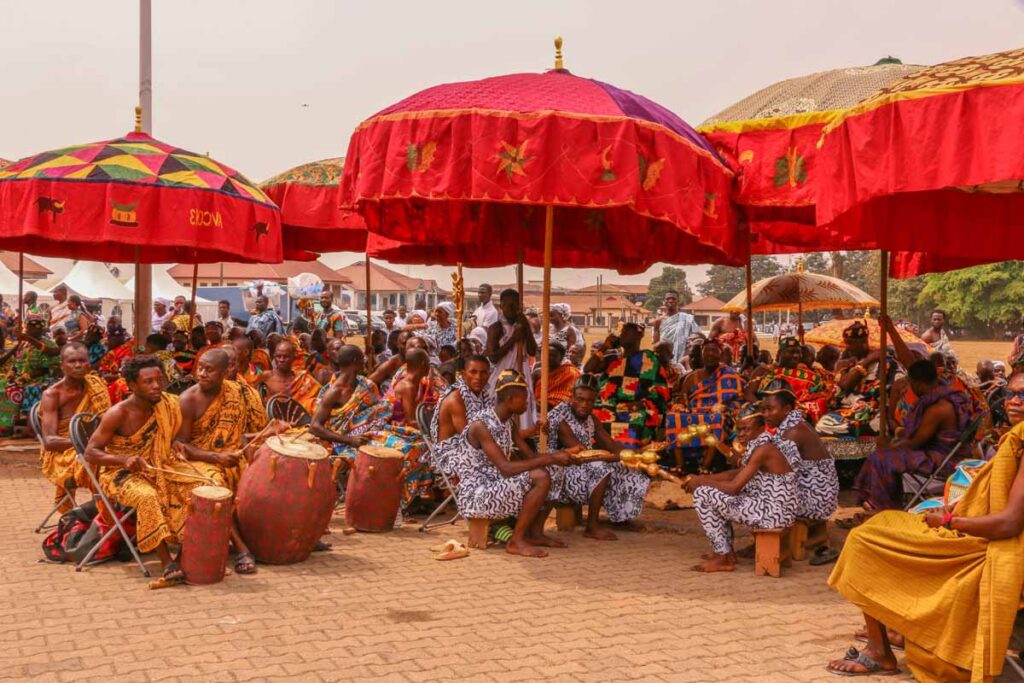
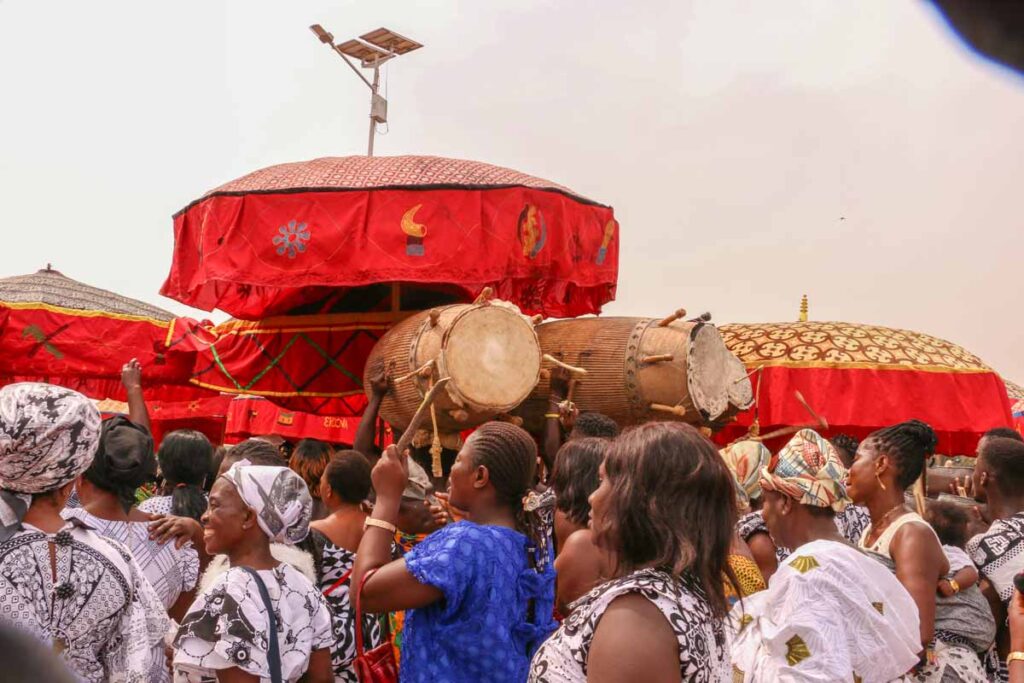

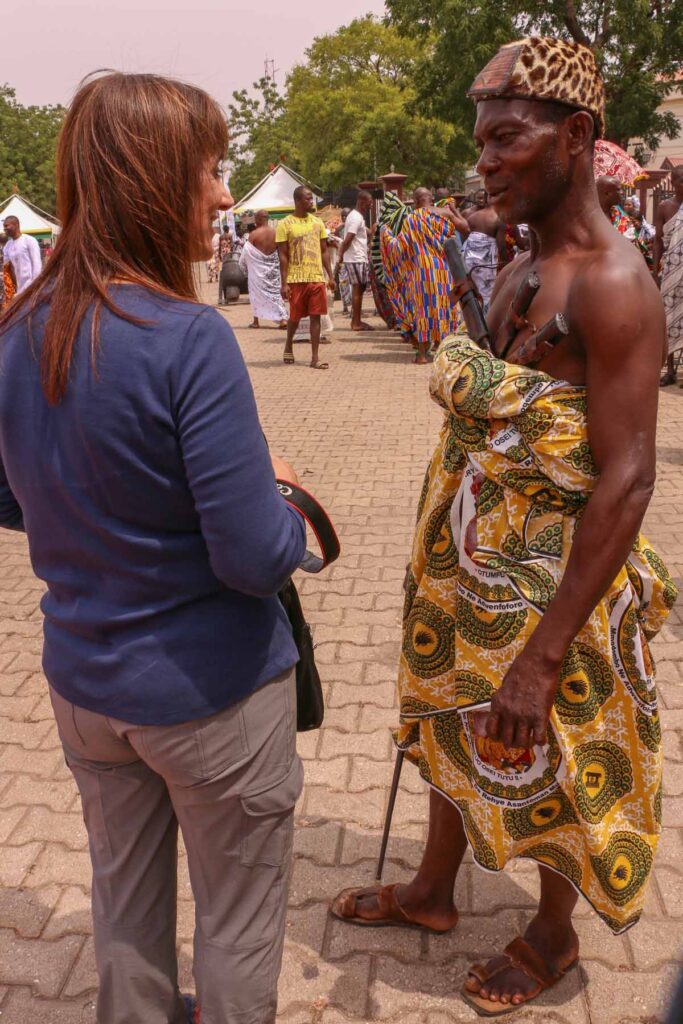
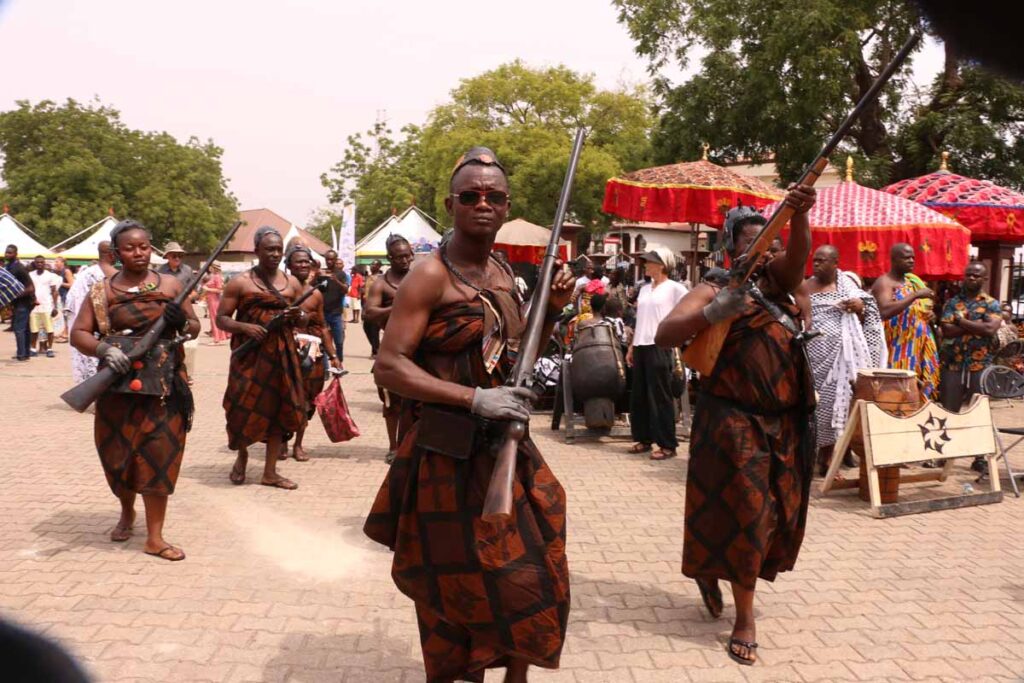
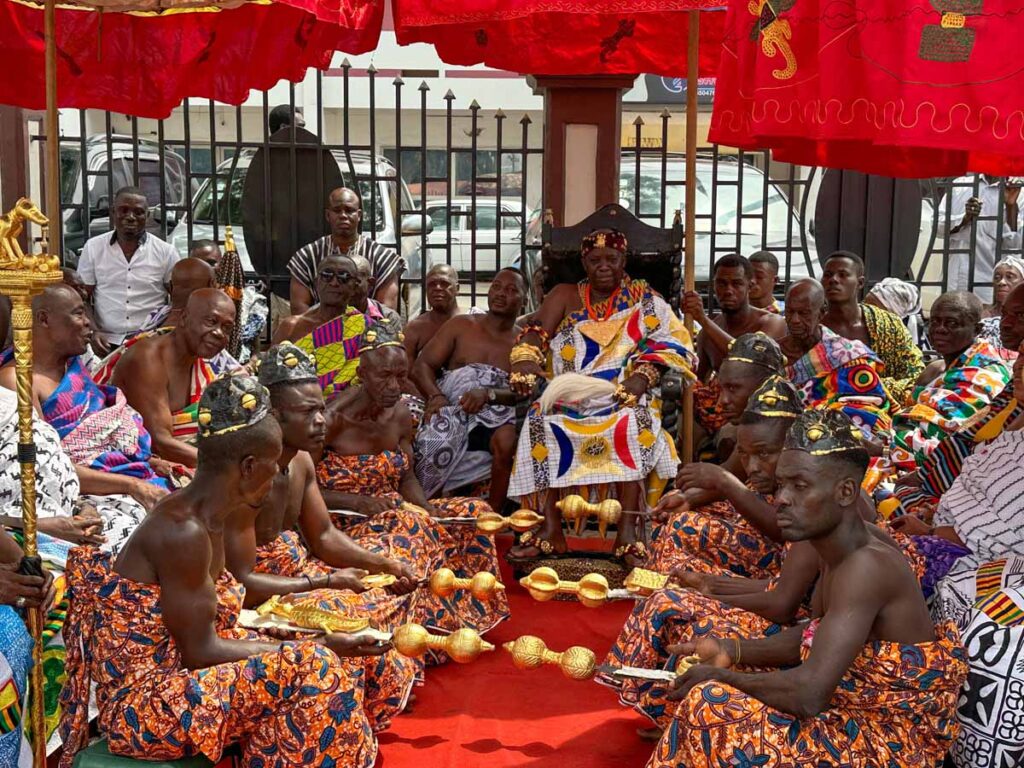
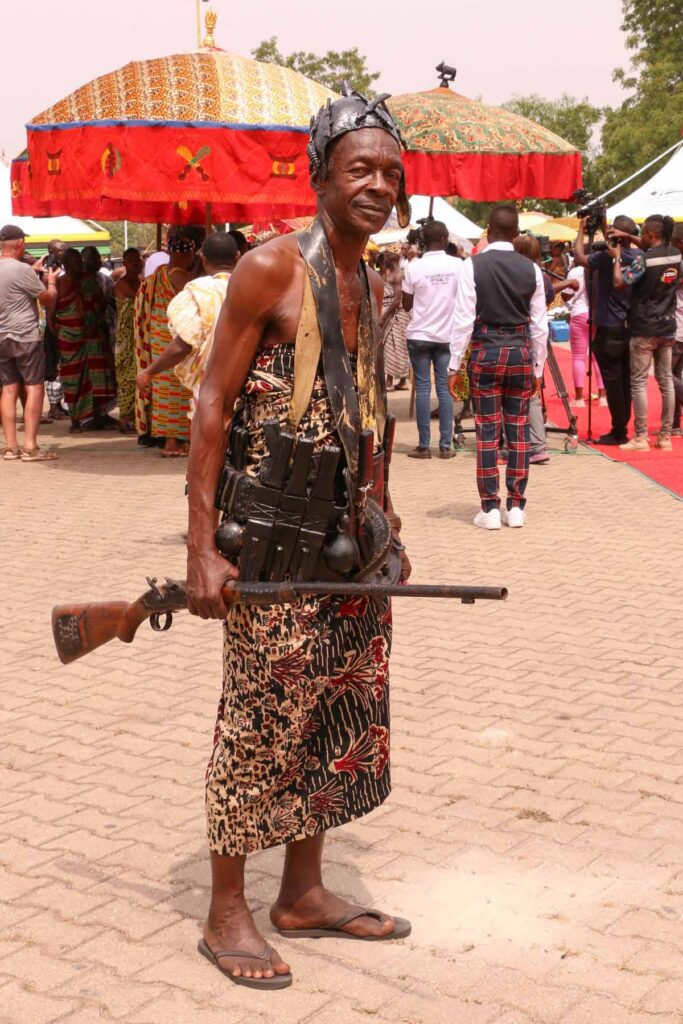
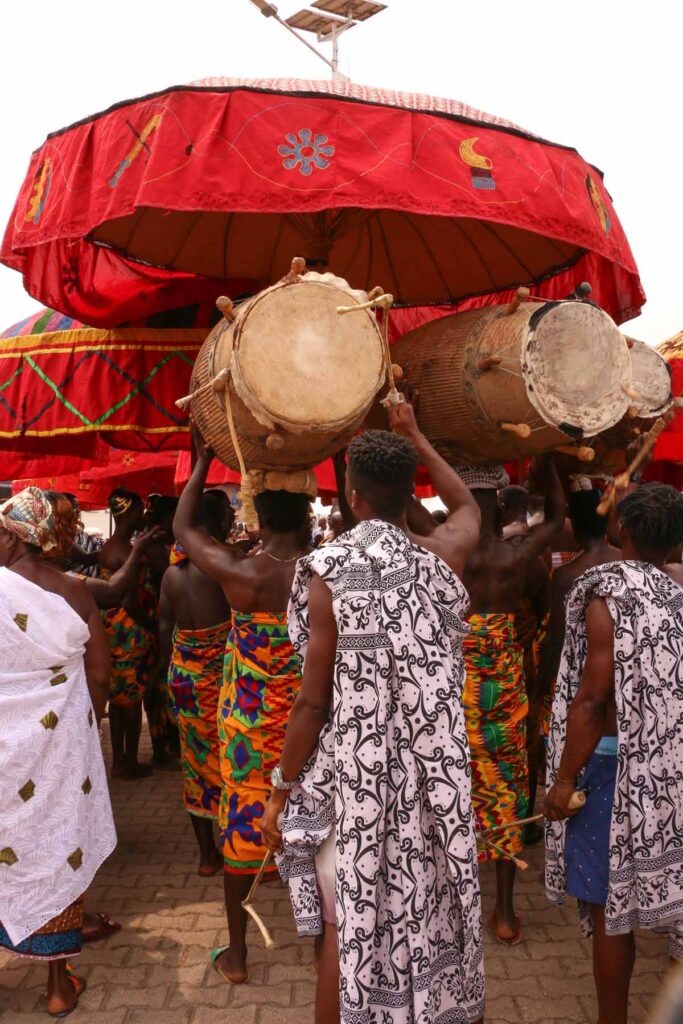
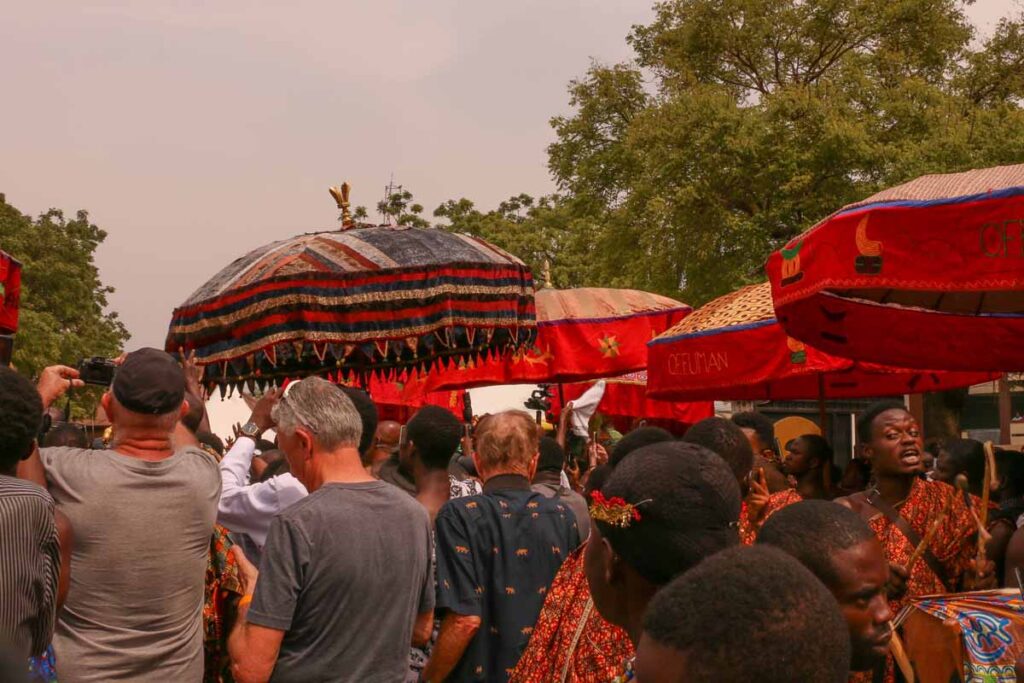
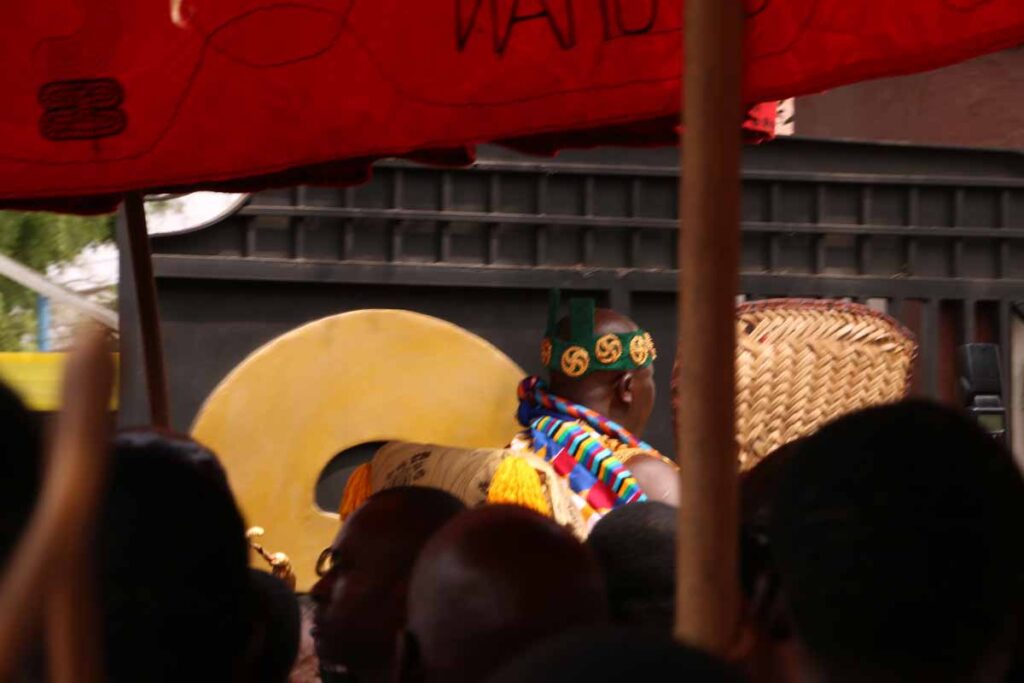
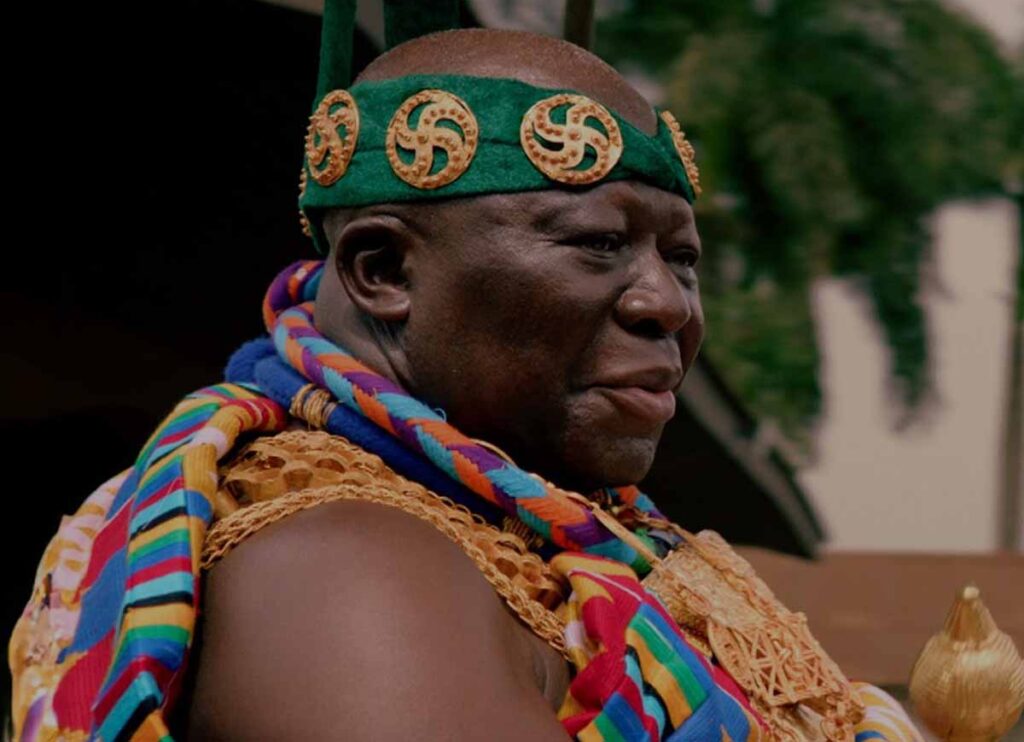

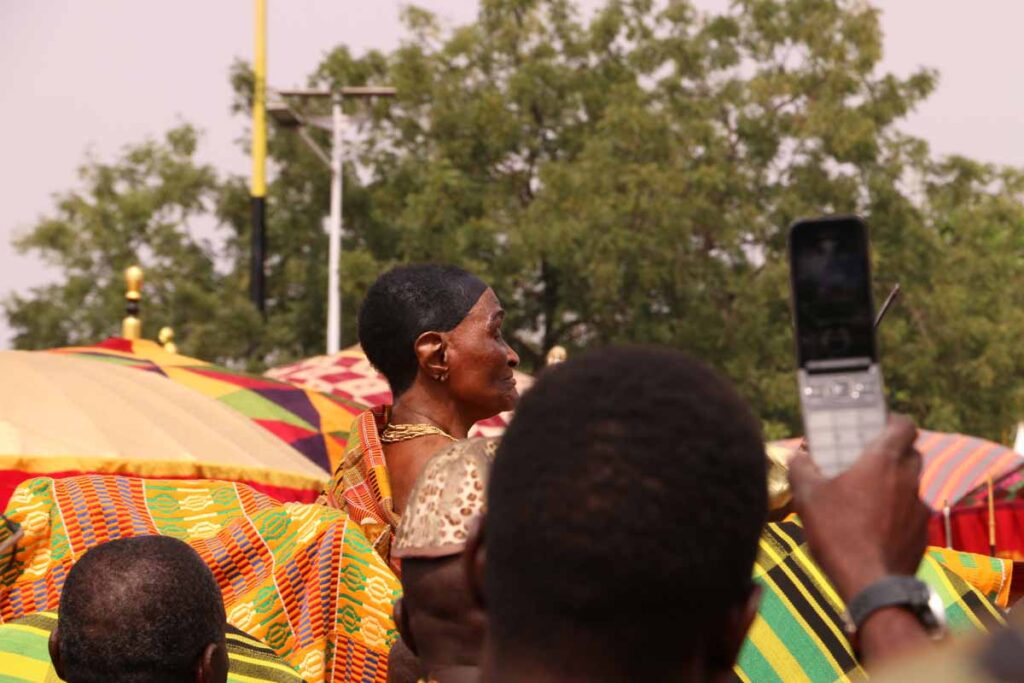

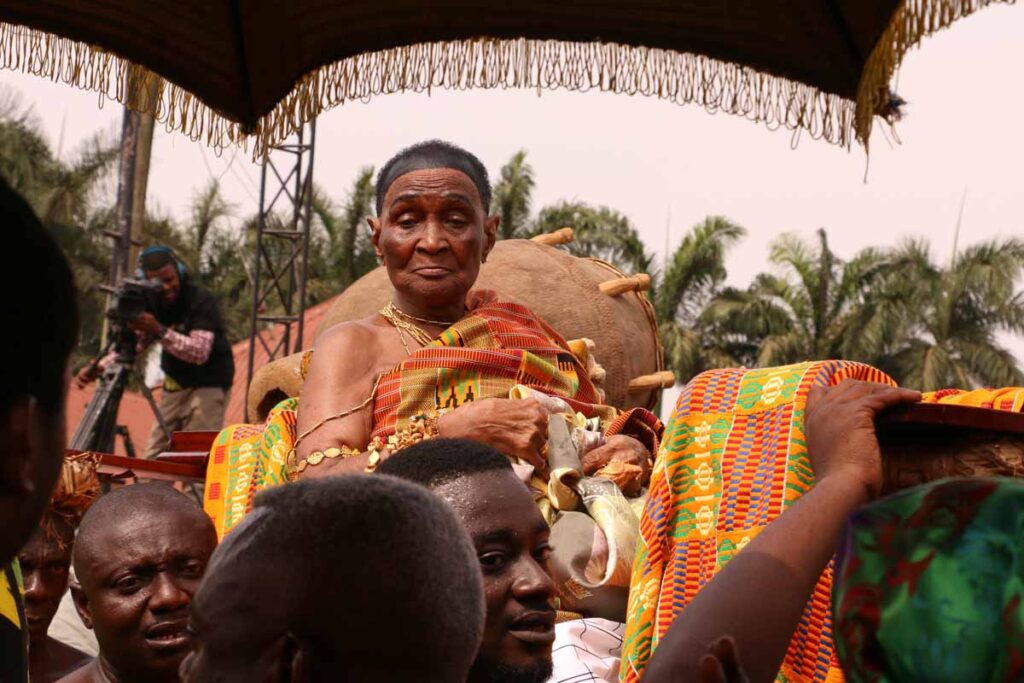
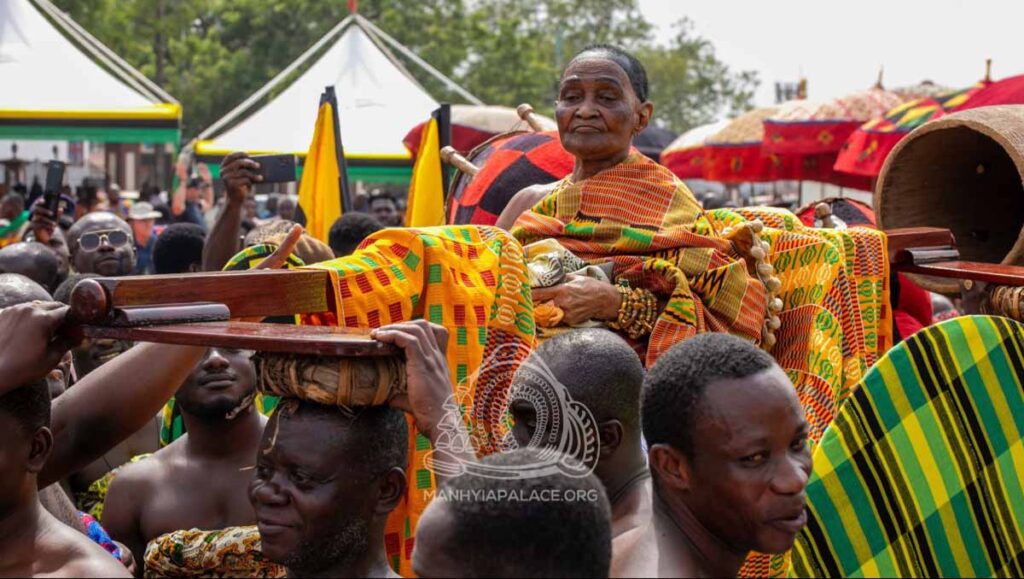

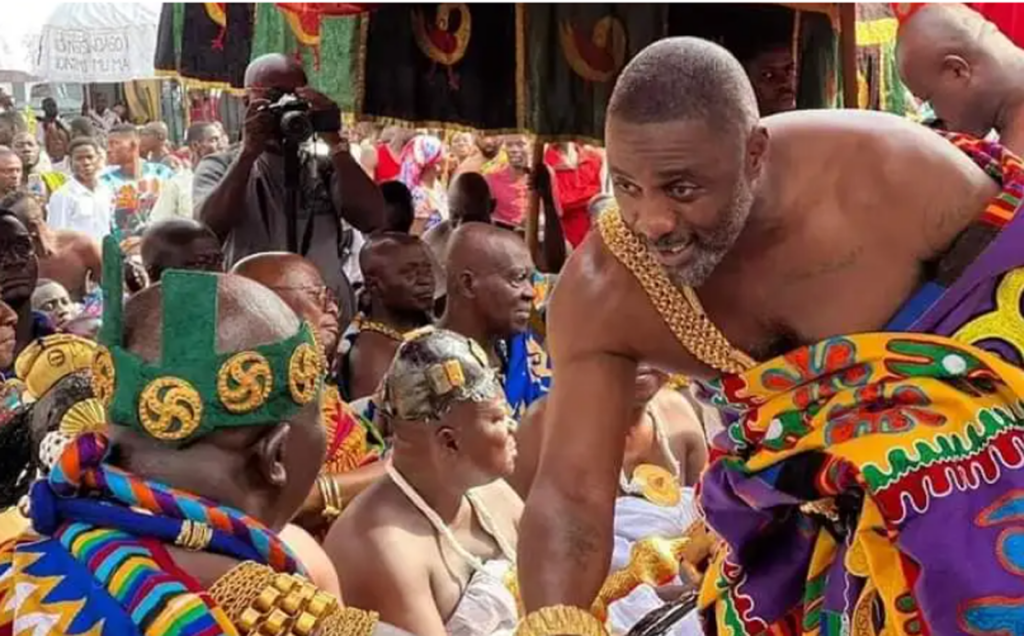
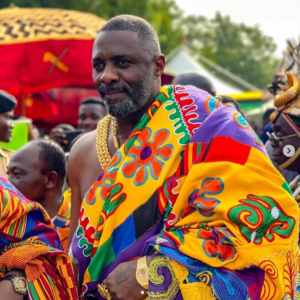
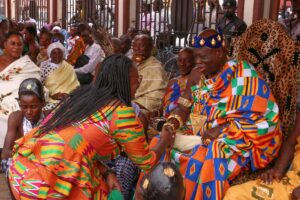
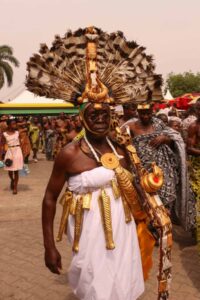

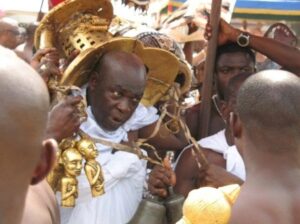
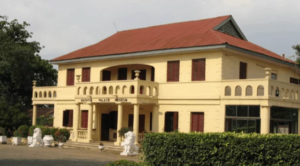
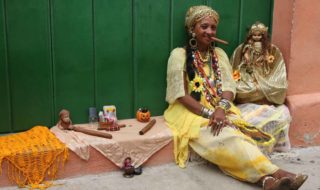
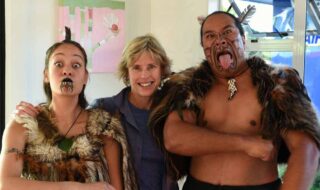
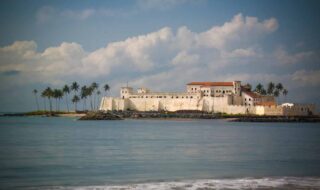
What a fascinating festival. Thank you so much for sharing it. I really enjoyed all the colorful photos–including the one of Idris Alba!
Thanks so much, Wendy for your kind words. Glad you vicariously enjoyed the Festival! I know you & Jason would really enjoy experiencing Akwasidae in person. And, you bet, knowing Idris Elba was there was an additional thrill! He’s trying to help set up film production capabilities there in Ghana!